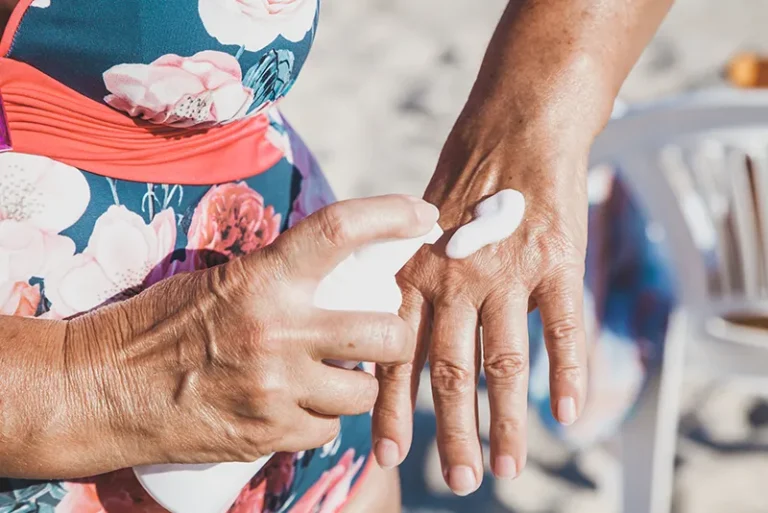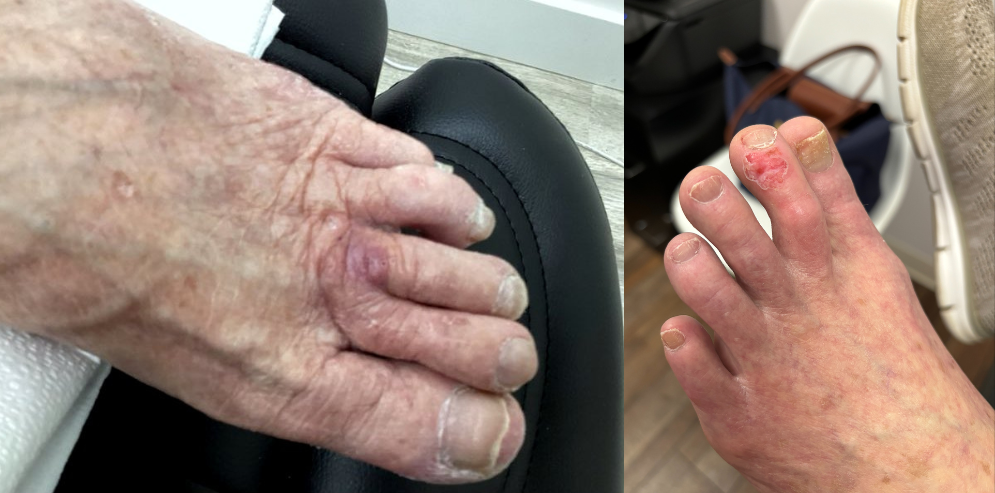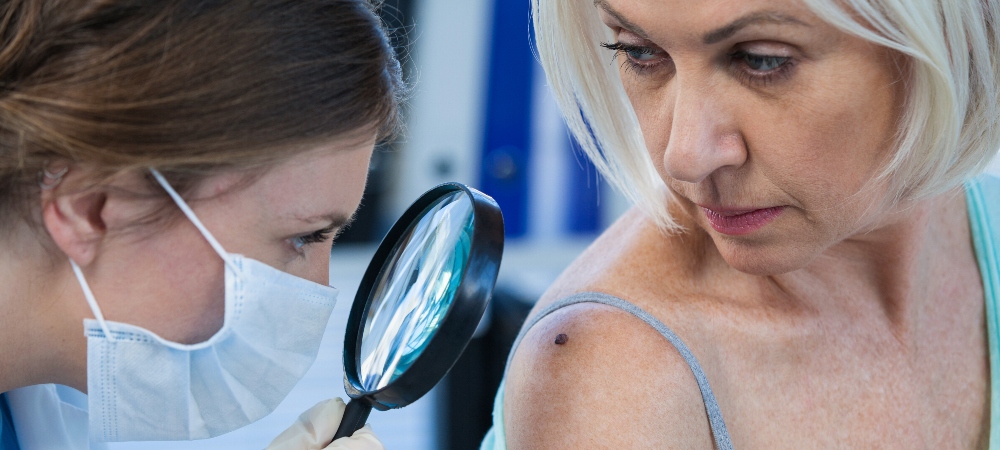
Is there a form of skin cancer that looks like a pimple? Yes, there are some variations of skin cancer that could resemble a pimple, especially in the earliest stages. Tiny skin cancer lumps on the skin that refuse to heal can look like acne.
It’s common for skin cancer to be mistaken for acne—especially when it appears as a red bump that won’t go away. People often search for answers to “is it a pimple or skin cancer” or seek pictures of skin cancer that looks like a pimple.
Discover how to tell the difference between a pimple and a skin cancer bump.
Pimple or Skin Cancer Bump?
Skin cancer is a very slow-developing disease, often taking weeks, months, or even years to fully take hold. While pimples may come and go, a skin cancer bump or lesion will not heal on its own, and in fact, will continue to grow and change its appearance over time. The average pimple stays on the skin for about a week and will begin to subside after popping it. Skin cancer “pimples” may pop, but that won’t help them heal.
One of the most surefire ways to tell the difference between a pimple or skin cancer is whether or not the bump goes away. Even the deepest of pimples will begin to fade over time, but skin cancer requires professional treatment.
If you’re dealing with a pimple that won’t go away after several weeks or seems to bleed or crust repeatedly, it may actually be a cancerous lesion. A persistent red bump is one of the earliest signs of basal cell skin cancer.
Skin Cancer Lump That Looks Like a Pimple
While there are multiple forms of this disease, the skin cancer that most looks like a pimple is basal cell skin cancer, which is the most common type. Especially in its earliest stages, basal cell carcinoma may appear as a tiny red bump that could bleed or puss, but instead of healing post-eruption, it will hold on and continue to grow. Here are some early warning signs that could point to a basal cell skin cancer lump that might be mistaken for a pimple:
- A sore that doesn’t heal (or heals and returns) and may bleed, ooze, or crust over
- A round growth that may be pink, red, brown, black, tan, or the same color as your skin
Sometimes, a basal cell skin cancer can look so much like acne that even dermatologists must rely on a biopsy to confirm the diagnosis. Unlike a clogged pore, skin cancer doesn’t respond to acne treatments.
Squamous cell skin cancer is also a common form of skin cancer that can appear anywhere on the body that has been exposed to UV rays. While basal cell skin cancer is more likely to be mistaken for a pimple, squamous cell skin cancer can also appear as a firm, dome-shaped growth or wart-like growth.
There is a chance that early melanoma could resemble a pimple, though this is less likely. Melanoma is most commonly brown or black and looks like a mole. Some melanomas, though, can start off as a dark red color but are likely to have an irregular border that differs from the circular form of pimples. Other symptoms of melanoma include:
- A new or evolving mole
- A spot that looks like a new mole, freckle, or age spot, but it doesn’t resemble others on your skin
- A dome-shaped growth that feels firm and may look like a sore, which may bleed
- A slow-growing patch of thick skin that resembles a scar
If you notice a red spot that persists and feels different from acne, particularly one that bleeds or becomes raised, it may be a skin cancer lesion mistaken for acne.
Use the ABCDEs
If you have a bump on your face that isn’t acne, you can use the ABCDEs of skin cancer to watch it closely. ABCDE stands for Asymmetry, Border, Color, Diameter, and Evolving.
- Asymmetry: Regular moles are usually more symmetrical than cancerous moles and spots.
- Border: If the suspicious area doesn’t have a smooth, well-defined border, and appears irregularly shaped, have a dermatologist take a closer look.
- Color: Moles are normally uniform in color. Cancerous moles and spots often have dark spots and are more than one color.
- Diameter: A spot or growth that has grown to be larger than the width of a pencil eraser (about six millimeters) or more should be examined.
- Evolving: Changes in size, shape, and color are red flags. Note any changes and discuss them with your healthcare provider.
These guidelines are especially useful if you have a red bump on your skin and are unsure whether it’s acne or something more serious. Skin cancer can mimic acne but typically doesn’t follow the same healing pattern.
If you’re concerned about whether a bump on your skin is a pimple or skin cancer, the best action method is to schedule a checkup with your dermatologist. A trained physician will be able to determine the source of your ailment and come up with a treatment plan.
GentleCure is a Surgery-Free Treatment for Skin Cancer
If the bump on your skin turns out to be cancerous, you do have treatment options. GentleCure™ is a non-invasive alternative to Mohs surgery, delivering effective results for people with common skin cancers. Discover how it works and ask your dermatologist whether GentleCure is the right treatment method for you.








